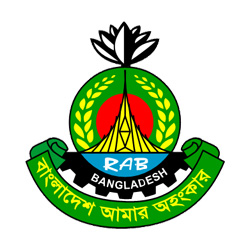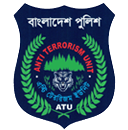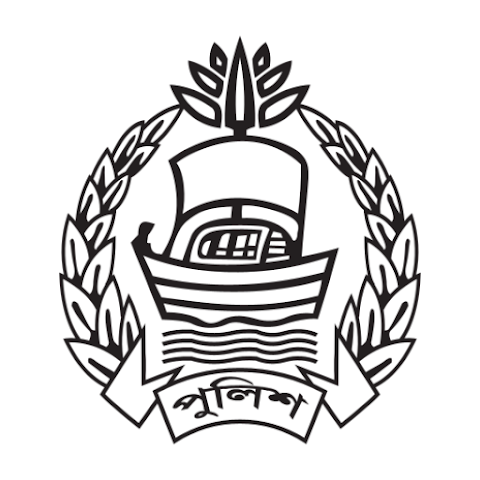Wellcome to National Portal
বাংলাদেশ পরমাণু শক্তি কমিশন
গণপ্রজাতন্ত্রী বাংলাদেশ সরকার
Text size
A
A
A
Color
C
C
C
C
সর্ব-শেষ হাল-নাগাদ: ২৯ জুলাই ২০১৫
রিএক্টর এন্ড নিউট্রন ফিজিক্স ডিভিশন
Objectives
- The prime objective of establishing the facility is to do research on condensed matter using neutron scattering technique.
- Development of condensed matters and studies their structural and dynamic properties using neutron scattering technique.
- Low temperature studies of synthesized samples in order to investigate the crystallographic and magnetic phase transitions.
- Measurement of magnetization of magnetic specimens.
- Analysis of major, minor and trace elements in the fields of environment, health, agriculture, industry, geology and mining, etc. using the neutron activation analysis techniques based on the TRIGA reactor and J-25 neutron generator.
- Neutron nuclear data measurements of importance in reactor technology applications and nuclear theory investigation.
- To develop a sound background for conducting advance research, both applied and basic, in nuclear Science and technology relevant to material development, material testing.
- To develop a strategy to approach all the beneficiaries so that research and development work of the neutron radiography team be sustained by direct application.
- The quality measurements of the materials/specimen used in national airline, air force, railway, petrochemical industry, and the production material of electric company, construction firms, ceramic, plastic, rubber, leather and steel industries, etc.
Groups
NS - Neutron Scattering
NAA - Neutron Activation Analysis
NR - Neutron Radiography.
Activities
Projects
- RAS/4/019 Improving Research Reactor Operation and Utilization (RCA)
- Strengthening the Utilization of TRIGA MARK-II Research Reactor (ADP).
- Magnetic spinel ferrites and perovskite structured ceramics (SIDA-Swedish Research Link project).
- Strengthening the Utilization of 3MW TRIGA Mark-II Research Reactor of Bangladesh for Optimal Use with Assured Safety (IAEA project).
- Determination of Arsenic in Groundwater, Soil, Human Tissue and Foodstuffs of Different Areas of Bangladesh Using Neutron Activation Analysis Technique (Bangladesh Ministry of Information, Communication and Science & Technology Project No. 104/2003-2004).
- Strengthening the Utilization of TRIGA Mark-II Research Reactor(ADP).
- Post-Tsunami Environmental Impact Assessment (RCA project No. ROK/06/001).
Services
- Arsenicoisis patients referred from different hospitals/clinics to estimate arsenic level in their body by analyzing hair;
- Government (National Museum, Department of environment, Food department, etc.), non-government organizations, universities, etc.
Achievements
- Study of the Crystallographic and Magnetic Properties of Hexagonal Ferrite BaFe12O19 by Neutron Diffraction
- Neutron Diffraction Study of Zn0.85 Ni0.15 Fe2O4 and Zn0.25 Ni0.75 Fe2O4 at room temperature.
- Study of the reflectivity of PG (002), Cu, Ge, Si and Be monochromator crystals in a neutron diffractometer geometry.
- A Review on structure and properties of substituted Y-Ba-Cu-O (YBCO) cuprate superconductors.
- Studies of the perturbed magnetic order in ZnxMg0.8-xNi0.2Fe2O4 ferrite system with x = 0.0, 0.2, 0.4 and 0.6. by diffraction
- Room temperature, low temperature and polarized neutron studies of superconductor YSr2Fe3O8 and its comparison with superconductor YBa2Cu3O7-d
- High and low temperature neutron diffraction study of Mn0.5Cr0.5Fe2O4.
- Neutron diffraction study of Fe-Al Alloys (2, 4, 6, 8, 10, 12 atomic wt. percent Al in Fe) at room temperature.
- Studies of the effect of annealing temperature on the complex permeability of Iron-Aluminum-Boron-Silicon amorphous ribbons.
- Studies of the influence of cation distribution on magnetization in a mixed spinel oxide CoxMn1-xAl2xO4 determined by X-ray diffraction and bulk magnetization measurements.
- Studies of cationic distributions and magnetization of Zn-Mg-Ni ferrite system from X-ray and bulk magnetization measurements.
- Studies of the radial distribution function of amorphous quartz by neutron diffraction
- Study of the structural, electrical and magnetic properties of Ba-TiO3 based dielectric materials prepared by PVA precursor route.
- Mapping of arsenic and other elemental contamination in different environmental compartments of Bangladesh and its impact on population health. The studied areas are:
- Borodutpalila village of Chuadanga district [at western part of Bangladesh]
- Six Thanas of Feni district [at eastern part of Bangladesh]
- Fatulla and Bandar of Narayanganj
- Khumarkhali of Sylhet
- Muktagacha of Mymenshing
- Madrasha complex of Srirumpur, Kachua, Chandpur
- Ghior, Manikganj Sadar and Shaturia of Manikganj district
- Optimized the preconcentration NAA (PNAA) method for the determination of total arsenic in groundwater.
- Services given to the arsenicosis patients referred by doctors from different Hospitals/Clinics
- Analysis of environmental pollution due to discharge of industrial effluents from Dhaka Export Processing Zone (DEPZ) and recommendation for development of low cost pilot plant for the treatment of effluents prior to release in the environment.
- Studied of chromium contamination in soils of existing tannery area in Hazaribagh and proposed area in Tetulzhora, savar.
- Studied on the distribution of trace elements in Barapukuria coal and its effect on the environment
- Measurement of fast neutron cross-section on different materials of importance in reactor technology applications using J-25 neutron generator.
- Thermal and epithermal neutron fluxes were measured at the different irradiation locations of the reactor. For instance, recently, due to improve the cooling system of the reactor, the neutron flux has changed and NAA Group re-measured the thermal and epithermal neutron fluxes at different irradiation locations using cadmium ratio foil activation technique. Several modifications of irradiation and counting aspects were implemented to improve the quality of flux mapping.
- Participated in several IAEA inter-comparison studies.
- Thermal neutron capture cross-section of Sm, Ga and W using TRIGA research reactor.
- NAA group successfully completed several IAEA Technical Co-operation Projects.
- Sixty M. Sc., five M. Phil. and one Ph. D. thesis from different universities have been completed from this laboratory.
- Detection of corrosion in aluminium
- Detection of defects in welding plate
- Quality measurement of some industrial products such as, leather, rubber, ceramics etc.
- Determination of defects in locally developed various kinds of shielding materials
- Determination of defects and water absorption behavior in different kinds of building materials ( both local and foreign)
- Study of diffusion of heavy water into light water,
- Determination of defects and water absorption behavior in different kinds of industrial products/ materials such as, viniard board, furnitex lacquerd, ceramics tiles etc.
- Determination of defects and water absorption behavior in various kinds of composite products/materials such as, wood-plastic composite, jute-plastic composite, aluminium coated polypropylene(pp)composite etc.
Major Facilities
- NS facilities
- A Triple Axis Neutron Spectrometer (TAS) at 3MW TRIGA Mark II research reactor.
- Sample preparation laboratory to develop different types of ceramic samples.
- A horizontal tube furnace for preparing samples (Maximum Temperature16000C)
- A box furnace for preparing samples (Maximum Temperature15000C)
- A centrifugal ball mill
- A 15 hydraulic press (Maximum capacity 15 ton)
- A CCR (up to 10 K) for low temperature measurements.
- Necessary computer software for
- analysis of neutron diffraction data (both nuclear and magnetic),
- analysis of SANS data
- analysis of inelastic scattering data
- beam research for experimental design.
- Several PC’S for data analysis
- NAA Facilities
- Irradiation channels
- Dry central thimble (DCT)
- Rotary specimen rack (Lazy Susan)
- Pneumatic transfer system (Rabbits
- Gamma spectrometry laboratory
- Gamma Spectrometry laboratory is equipped with the following equipments:
- Canberra coaxial HPGe gamma ray detectors with conventional and digital spectrometry system.
- Liquid nitrogen pressure vessel (100 L capacity);
- Detector shieldings
- Personal computer based gamma acquisition software- Genie 2000 and Ortec Maestro.
- Gamma Peak analysis software Hypermat PC and Gamma vision.
- Peakgr10 software for gamma spectrum analysis as well as concentration calculation.
- Computer for data acquisition and analysis.
- A set of point source for the calibration of gamma spectrometry system (Co-57, Co-60, Cs-137, Na-22, Ba-133, Eu-152, Ra-226, Mn-54).
- Sample preparation and radioactive sample handling laboratory
- Analytical micro balance
- Fume hood
- Freeze dryer
- Oven (Mammert)
- Lead barrier glass shielding
- Hydraulic press (capacity: maximum 15 tone)
- Acid distillation unit
- Milipore filtration devices with vacuum pump
- Hot plates
- Micro pipettes (various ranges), desiccators and other glassware
- Heat Mantle
- NR Facilities
- Neutron Radiography camera(s)/cassette(s)
- Image analysis software
- Digital Optical Densitometer
- Gadolinium metal foils/screens
- Beam purity indicator (BPI) & sensitivity indicator (SI)
- Photo Enlarger
- Photo Viewer
- Film drier
Perspective Plan
- Strengthening the Utilization of TRIGA Mark-II Research Reactor Project of Bangladesh Atomic Energy Commission
- To establish the facility for low and high temperature measurements.
- Texture of different industrial products like steel, brass, aluminum, ceramic, jute and silk which will be available in Bangladesh.
- To develop different magnetic materials for commercial importance.
- To establish Inelastic Neutron Scattering Facility in future
- To develop collaboration with Ceramic, Plastic, Steel and electronic industries to improve the desired quality of their products.
- To establish state-of-the-art national facilities for scientific research and services to the people with a view to ensure the best utilization of the only research reactor of the country.
- To develop skilled manpower in the field of nuclear technology and maintenance of the facilities.
In short, the main targets of NAA group are as follows:
- To upgrade and extent the analytical facilities of NAA laboratory for increasing the analytical services flashing on the country’s social needs;
- Development and implementation of k0-standardization NAA approach with an aim to determine wide range of elements present in the sample with adequate precision and accuracy without using Certified Reference Materials;
- Development of prompt gamma neutron activation analysis (PGNAA) facilities at one of the unutilized radial beam port of TRIGA reactor for the determination of light elements like B, S, Ni, O, F, etc. In various sample matrices that will ensure the optimum utilization of the reactor;
- Characterization, optimization and correlation study of different forms of NAA techniques e.g., INAA (instrumental neutron activation analysis), ENAA (epithermal neutron activation analysis), RNAA (radiochemical neutron activation analysis) and k0-NAA with a view to ensure the proper utilization of research reactors and to face analytical challenge in 21st century;
- Identification and implementation of appropriate standardization approach which can be served the needs for proper quantification;
- Elemental characterization and correlation of deposits or formations to investigate the sources of arsenic, controls on their mobilization and regional heterogeneity in the aquifers through collection of data of high quality;
- Elemental characterization of bio-matrices, foodstuffs, soil, water, etc. In order to determine toxicity and nutrient deficiency and to create baseline data;
- Implementation of QA/QC concept with a view to increase the reliability of analysis;
- Validation of NAA technique that is an obligation laid down in ISO Standard, for example in case of NAA the ISO Standard 17025;
- To strengthen the academic collaboration with universities and other research organizations to increase the number of nuclear professions.
- Study of water intake in locally developed wood plastic composites and building materials
- Study of locally developed some shielding materials such as, paraffin, polyboron, boric acid, rubber latex etc.
- Study of water intake in soil of certain areas for root growth and boron deficiency in plants
- Study of different ceramic materials and their products
- Detection of defects, voids and internal continuity in different industrial materials/products such as, cables, semiconductor diodes, printed circuits etc.
- Establishment of automated lead shutter and beam stopper motorized gear system
- Establishment of real time neutron radiography facility in the existing facility
- Detection of drugs and explosives concealed in luggage and cargo container
- Detection of defects in nuclear fuel elements, etc.
Academic Activities
- Since installation of TAS a number of researchers from the neutron scattering group and different Universities have been carried out their research work in the neutron scattering laboratory for their academic degrees. Among them three scientists have been awarded Ph.D. degree, three have obtained their M. Phill degree and about 20 students have completed their research work to obtain their M.Sc. degree. Moreover, a number of students are presently using this research facility for M. Sc., M. Phill. and Ph. D. degree.
- NAA Group is very keen to collaborate with almost every University of the country. About sixty students from different universities and other scientific organizations of the country were carried out their research works at NAA laboratory to obtain academic degrees, like M. Sc., M. Phil. and Ph. D with the guidance of laboratory experts.
- A number of academic degrees have been achieved working in the neutron radiography laboratory. One Ph. D., 2 M. Phil. and 15 M. Sc. students from different universities so far have completed their thesis from this laboratory. A number of students are presently working for M. Sc., M. Phil. and Ph. D. degree.




























